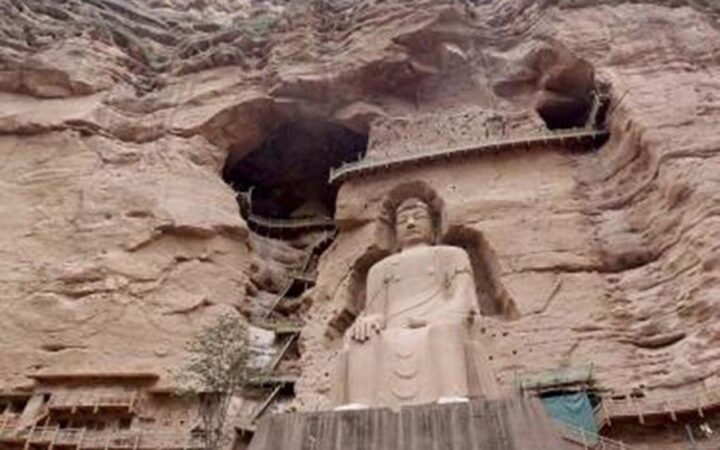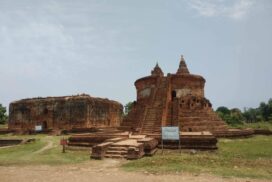On 27 March 2024, during the 219th meeting held in Paris, France, UNESCO’s Executive Board endorsed the addition of 18 sites to the UNESCO Global Geoparks Network. This brings the total number of global geoparks to 213 in 48 countries.
About UNESCO
With 194 Member States, the United Nations Educational, Scientific and Cultural Organization contributes to peace and security by leading multilateral cooperation on education, science, culture, communication and information. Headquartered in Paris, UNESCO has offices in 54 countries and employs over 2,300 people. UNESCO oversees more than 2,000 World Heritage sites, Biosphere Reserves, and Global Geoparks; networks of Creative, Learning, Inclusive, and Sustainable Cities; and over 13,000 associated schools, university chairs, training, and research institutions. Its Director-General is Audrey Azoulay. “Since wars begin in the minds of men, it is in the minds of men that the defences of peace must be constructed” – UNESCO Constitution, 1945.
About UNESCO Global Geoparks
The UNESCO Global Geopark designation was created in 2015. UNESCO Global Geoparks are single, unified geographical areas where sites and landscapes of international geological significance are managed with a holistic concept of protection, education, and sustainable development. By raising awareness of the importance of the area’s geological heritage in history and society today, UNESCO Global Geoparks gives local people a sense of pride in their region and strengthens their identification with the area. The creation of innovative local enterprises, new jobs, and high-quality training courses is stimulated as new sources of revenue are generated through geotourism. UNESCO Global Geoparks are given this designation for a period of four years, after which the functioning and quality of each UNESCO Global Geopark is thoroughly re-examined during a revalidation process.
The new geoparks are situated in Brazil, China, Croatia, Denmark, Finland, France, Greece, Hungary, Poland, Portugal, and Spain. There is an additional new transboundary geopark spanning Belgium and the Kingdom of the Netherlands.
The UNESCO Global Geopark designation was created in 2015. It recognizes geological heritage of international significance. Geoparks serve local communities by combining the conservation of their significant geological heritage with public outreach and a sustainable approach to development.
UNESCO continues to promote the geopark concept in regions where geoparks are less common, notably in Africa, the Arab States, and Small Island Developing States. UNESCO does this by facilitating expert missions, tailored training sessions, and individual consultations on both a national and local scale to guide the preparation of applications for UNESCO Global Geopark status. The newly designated UNESCO Global Geoparks are:
Belgium and the Kingdom of the Netherlands
1. Schelde Delta UNESCO Global Geopark
Schelde Delta UNESCO Global Geopark holds a unique geological position between the sinking North Sea Basin and the rising Brabant Massif.
Brazil
2. Uberaba UNESCO Global Geopark
Located within South America’s second largest biome, in southeast Brazil, lies the Uberaba UNESCO Global Geopark.
China
3. Enshi Grand Canyon-Tenglongdong Cave UNESCO Global Geopark
Enshi Grand Canyon-Tenglongdong Cave UNESCO Global Geopark lies southwest of Hubei Province. The geopark is home to world-famous erosion and dissolution landscapes and the rich cultural heritage of the Tujia, Miao, and Dong ethnic minority groups.
4. Linxia UNESCO Global Geopark
Linxia UNESCO Global Geopark is located in the Gansu Province. It features a landscape characterized by mid-high mountains, hills, and basins. The area played a significant role in China’s early historical and cultural development.
5. Longyan UNESCO Global Geopark
Longyan UNESCO Global Geopark offers a geological record of tectonic evolution in southeast China covering a period of approximately 300 million years.
6. Mount Changbaishan UNESCO Global Geopark
Located in the southeast Jilin Province, Mount Changbaishan UNESCO Global Geopark is like an open-air classroom for volcanism, with dramatic landforms and diverse rock types that document significant multiphase eruptions.
7. Wugongshan UNESCO Global Geopark
Wugongshan UNESCO Global Geopark is located at the junction of three cities, Pingxiang, Yichun, and Ji’an, in the west of Jiangxi Province.
8. Xingyi UNESCO Global Geopark
Located in Guizhou Province, Xingyi UNESCO Global Geopark is a geological treasure trove with imposing natural scenery, such as the Malinghe River Gorge, bursting with over 100 cascading waterfalls during periods of heavy rain.
Croatia
9. Biokovo-Imotski Lakes UNESCO Global Geopark
The Biokovo-Imotski Lakes UNESCO Global Geopark is situated in central Dalmatia. It sits at a unique intersection of Mediterranean and Central European landscapes and cultures.
Denmark
10. The South Fyn Archipelago UNESCO Global Geopark
The South Fyn Archipelago UNESCO Global Geopark in the central and southern parts of the country encompasses both terrestrial and marine zones that transcribe approximately 800,000 years of geological history.
Finland
11. Impact Crater Lake – Lappajärvi UNESCO Global Geopark
Impact Crater Lake – Lappajärvi UNESCO Global Geopark is located in South Ostrobothnia, which is west of the country.
France
12. Armorique UNESCO Global Geopark
From the vertical cliffs of the Crozon Peninsula to the Arrée Mountains, the Armorique UNESCO Global Geopark offers a journey through more than 500 million years of geological history.
13. Normandie-Maine UNESCO Global Geopark
Normandie-Maine UNESCO Global Geopark lies within a peaceful pastoral region that is rich in hamlets, villages and meadows and reaches into the departments of both Normandy and the Pays de la Loire.
Greece
14. Meteora Pyli UNESCO Global Geopark
Nestled within the picturesque Thessaly region at the centre of mainland Greece, the Meteora Pyli UNESCO Global Geopark is famed for the towering Meteora sandstone columns that reach heights of up to 300 metres.
Hungary
15. Bükk Region UNESCO Global Geopark
The Bükk Region UNESCO Global Geopark in northern Hungary lies in one of the country’s most complex geological environments. It comprises a near-continuous sedimentary sequence spanning more than 300 million years, punctuated by periods of volcanic activity.
Poland
16. Land of Extinct Volcanoes UNESCO Global Geopark
Situated in the scenic southwest, the Land of Extinct Volcanoes UNESCO Global Geopark encompasses the Kaczawskie Mountains and surrounding foothills.
Portugal
17. Oeste UNESCO Global Geopark
The Oeste UNESCO Global Geopark, located along Portugal’s central west coast, encompasses over 72 kilometres of Atlantic coastline, with more than 15 kilometres of sandy beaches.
Spain
18. Calatrava Volcanoes. Ciudad Real UNESCO Global Geopark
Calatrava Volcanoes. Ciudad Real UNESCO Global Geopark is situated southwest of the autonomous community of Castilla-La Mancha in central Spain.
Reference: UNESCO Press release, March 2024.














